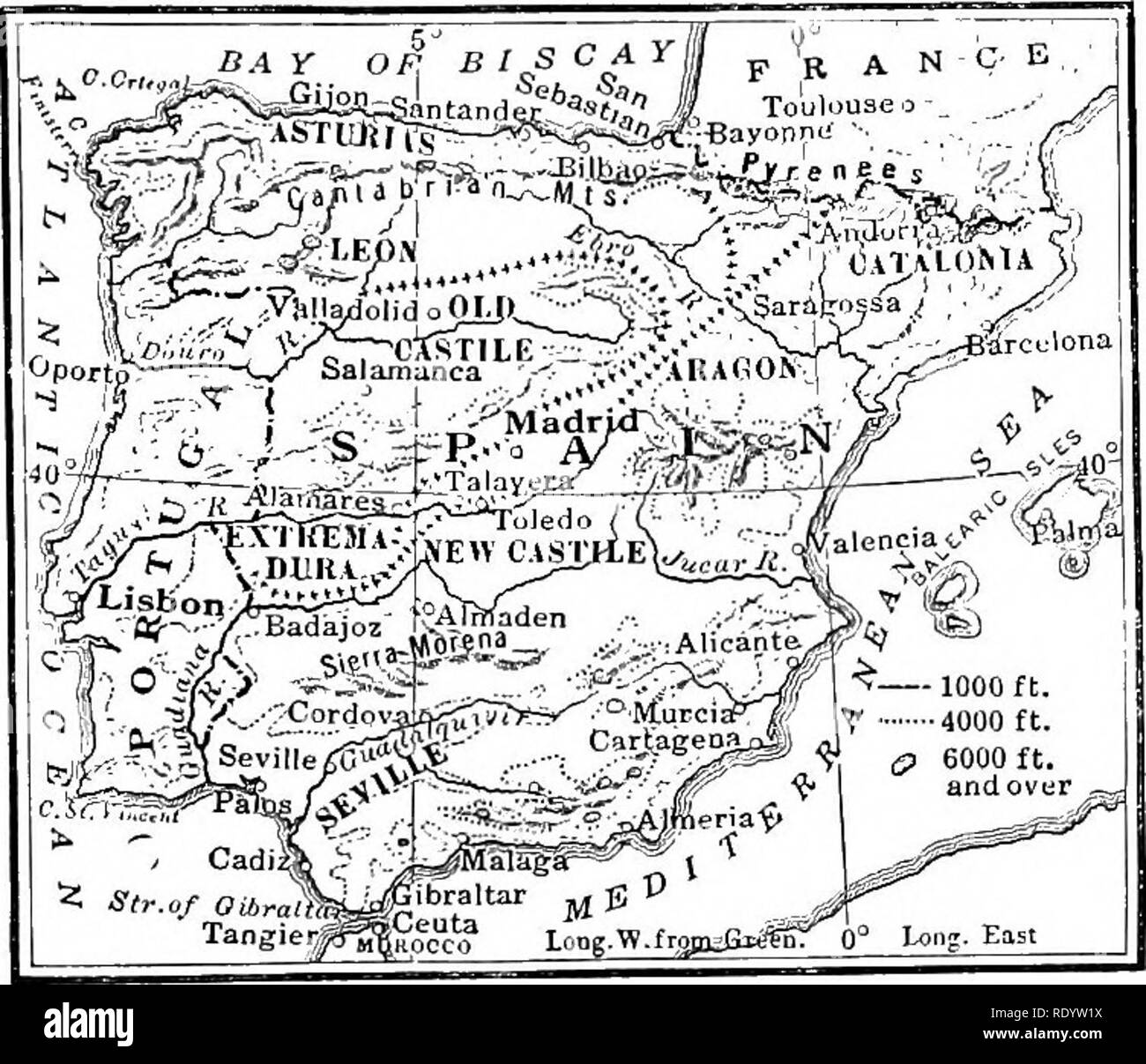. Types and breeds of farm animals. Livestock. THE AMERICAN MERINO 491 Aguirre Merinos had more wool about the face and legs than did the other families. The wool was more crimped than that of the Paulars and less so than that of the Negrettis, and was thick and soft. The Aguirres had short legs, round and broad bodies, and much loose skin, or folds. In a letter written to Consul Jarvis in December, 1810, the writer states that Cochran Johnson had "sent about three thousand Merinos, principally Aguirres, to New York." Negretti Merinos were the largest and strongest of the Trans- huma

Image details
Contributor:
The Book Worm / Alamy Stock PhotoImage ID:
RDYW1XFile size:
7.1 MB (461.9 KB Compressed download)Releases:
Model - no | Property - noDo I need a release?Dimensions:
1705 x 1465 px | 28.9 x 24.8 cm | 11.4 x 9.8 inches | 150dpiMore information:
This image is a public domain image, which means either that copyright has expired in the image or the copyright holder has waived their copyright. Alamy charges you a fee for access to the high resolution copy of the image.
This image could have imperfections as it’s either historical or reportage.
. Types and breeds of farm animals. Livestock. THE AMERICAN MERINO 491 Aguirre Merinos had more wool about the face and legs than did the other families. The wool was more crimped than that of the Paulars and less so than that of the Negrettis, and was thick and soft. The Aguirres had short legs, round and broad bodies, and much loose skin, or folds. In a letter written to Consul Jarvis in December, 1810, the writer states that Cochran Johnson had "sent about three thousand Merinos, principally Aguirres, to New York." Negretti Merinos were the largest and strongest of the Trans- humantes sheep of Spain. The wool was somewhat shorter and more open than that of the Paular and " inclined to double." Many Negrettis were wooled on the face and on the legs to the hoofs. All the loose-skinned sheep had heavy dew- laps. The rams pos- sessed large horns. Guadaloupe Merinos were heavier of bone than the Negrettis and were of much the same size, but were not so handsome, ac- cording to Jarvis, although Lasteytie credits them with the most perfect form and says they are celebrated also for the quantity and quality of their wool. These sheep had numerous folds, and the wool was thick and crimped and more oily than the Negrettis. Escurial Merinos were about as tall as the Paulars, but were slighter of frame. Their wool was crimped and not so thick as that of the Paular, and they had less wool on the legs and face. The skins of the Escurial sheep were not so loose as were those of the Negretti and Aguirre families. Another family, known as the Montarcos, very closely resembled the Escurials, but were not prime favorites for imp^rtj^tJ^S/^g, Am^ica.. Fig. 218. A map of Spain, showing the provinces in which Merino breeding was important at the beginning of the nineteenth century. The chain marks indicate the routes that were followed by the Transhumantes flocks. Please note that these images are extracted from scanned page images that may have been digitally enha